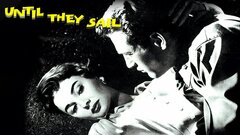The younger sister of actress Olivia de Havilland, Joan Fontaine was a British actress known for her exceptionally poised performances in a string of popular Hollywood films throughout the 1940s and 1950s. Following well-received appearances in the George Stevens epic-adventure "Gunga Din" (1939) and George Cukor's "The Women" (1939), Fontaine wowed audiences with her performance in Alfred Hitchcock's psychological thriller ""Rebecca" (1940).
The following year, she reteamed with Hitchcock and "Gunga Din" co-star Cary Grant for a starring role in "Suspicion" (1941), which won the actress an Academy Award. Over the next decade, she played romantic leads opposite cinema's greatest male stars in such films as "Jane Eyre" (1943) with Orson Welles and "Ivanhoe" (1952) alongside Robert Taylor.
Gradually, Fontaine's career trajectory led her to roles as formidable older woman in projects like "Island in the Sun" (1957) and "Tender is the Night" (1962). Married four times, her husbands included "Batman" (ABC, 1966-68) producer-narrator William Dozier, and the reputed sibling rivalry between her and de Havilland kept Hollywood gossips' tongues wagging for decades.
In the years after her retirement from film, Fontaine continued to appear in such stage productions as the Broadway comedy "Forty Carats" and went on to earn an Emmy nomination for her guest turn on the soap opera "Ryan's Hope" (ABC, 1975-1989). One of the brightest stars of Hollywood's Golden Era, Fontaine was widely remembered as an actress of exceptional talent and a person of tremendous passion. She died at the age of 96 in December 2013.
Born Joan de Beauvoir de Havilland in Tokyo, Japan on Oct. 22, 1917, she was the daughter of British patent attorney Walter de Havilland and Lillian Augusta Ruse, a former stage actress; as both she and her father would often recount, the family counted two English kings in their lineage. Plagued by illness as a child, including bouts with anemia and measles, Fontaine was sent with her sister and mother to live in Saratoga, CA, while her father remained in Japan.
Her parents' marriage was already in trouble prior to the move to the States, and the separation preceded a divorce, which became final when Fontaine was two. Academic tests proved Joan to be an exceptionally bright child with an IQ of 160, and she excelled at school. Home life, however, was a different story; she had an uneasy relationship with de Havilland, who was reportedly favored by her mother. The feud eventually became the stuff of Hollywood legend, and by all accounts, was alive and well when both sisters had entered their ninth decades.
Fontaine left Los Angeles in 1932 to live with her father in Japan. She returned a year later and began to develop an interest in acting like her sister, who was making a name for herself on stage. Fontaine adopted the surname "Burfield" for her stage debut opposite May Robson in a 1935 production of "Kind Lady." The story surrounding her stage name was part of the legend of the feud; allegedly, Fontaine's mother refused to allow her to bill herself as "de Havilland" because it would interfere with her sister's career, although other sources stated that Fontaine adopted the name without any prompting.
Whatever the case, she soon found herself signed to RKO and made her screen debut with a small role in George Cukor's "No More Ladies" (1935), starring Joan Crawford. By 1937, she had changed her name again, this time using her stepfather's surname of Fontaine for a string of minor dramas and musicals. A break came with a major role opposite Fred Astaire in the George Gershwin musical "A Damsel in Distress" (1937), but the picture was a failure at the box office.
Her fortunes began to change in 1939 when she received excellent notices for her performance in "Gunga Din" as the love interest of British soldier Douglas Fairbanks, Jr., and later as a naïve newlywed caught in the midst of Joan Crawford, Norma Shearer, Rosalind Russell and Paulette Godard in Cukor's film adaptation of "The Women" (1939). That same year, she married her first husband, British actor Brian Aherne, which ended unhappily in divorce in 1945.
A chance seating next to producer David O. Selznick at a dinner party paved the way for her to audition for Alfred Hitchcock's "Rebecca" (1940), which became one of her greatest screen triumphs. The auditions were reportedly a grueling experience for all involved, and Hitchcock exploited her weariness for the film's unnamed narrator, who struggles with the adulation felt for the late title character, who is still worshipped by her new husband (Laurence Olivier) and his malevolent housekeeper (Judith Anderson). The film was a box office success, and made Fontaine both a Hollywood star and an Oscar nominee. However, she lost the trophy to Ginger Rogers in "Kitty Foyle" (1940).
The following year, she reunited with Hitchcock and her "Gunga Din" co-star Cary Grant for "Suspicion" (1941), a crackling psychological thriller about a young woman who discovers that the man she has married - Grant, in a decidedly uncharacteristic turn - is a compulsive liar, thief and burgeoning murderer. The Academy nominated her again for Best Actress - this time, opposite her sister, who had become a star in her own right thanks to "The Adventures of Robin Hood" (1938) and "Gone With the Wind" (1939), and was nominated for "Hold Back the Dawn" (1941). Fontaine took home the Oscar that evening, and according to legend, she snubbed de Havilland's attempts to congratulate her as she walked to the podium. Years later, de Havilland would do the same to Fontaine when she accepted her award for "To Each His Own" (1946).
Fontaine soon settled into a series of romantic films which capitalized on her emotional turns in "Rebecca" and "Suspicion." Most were high quality efforts; she earned her third Oscar nomination as a naïve Belgian girl who falls for a self-absorbed composer (Charles Boyer) in Edmund Goulding's 1943 adaptation of Margaret Kennedy's novel "The Constant Nymph," and played Charlotte Bronte's eponymous heroine in "Jane Eyre" (1944) opposite Orson Welles as Rochester.
"Frenchman's Creek" (1944) found her English noblewoman romanced by dashing pirate Arturo de Cordova, while "The Affairs of Susan" (1945), "From This Day Forward" (1945) and "Ivy" (1947) found her entangled in one or more love affairs, occasionally with unhappy results. Fontaine also found time to become an American citizen in 1943. Three years later, she married actor-producer William Dozier - later the man responsible for the TV version of "Batman" (ABC, 1966-68) - with whom she had a daughter, Deborah, in 1948.
She also formed a production company with Dozier, called Rampart Productions, which oversaw her 1948 film "Letter from an Unknown Woman" for director Max Ophuls. A heady romance in the style of her collaborations with Hitchcock, it preceded several more hits, including the Billy Wilder musical comedy "The Emperor Waltz" (1948) with Bing Crosby, and a gritty 1948 film noir, "Kiss the Blood Off My Hands," with Burt Lancaster.
Fontaine was absent from productions from 1949 but returned in 1950 for a string of sudsy melodramas, including "September Affair" (1950) and "Born to Be Bad" (1950). High emotion was not relegated to Fontaine's onscreen appearances; she divorced Dozier in 1951, and adopted a Peruvian orphan, Martita, in 1952, before marring screenwriter Collier Young that same year. Her film career continued on a largely positive if unremarkable path for the next decade or so.
There were hits like "Ivanhoe" (1952) with Robert Taylor, and the Bob Hope comedy "Casanova's Big Night" (1954). She also had an unbilled cameo in Welles' film version of "Othello" in 1952. She tried her hand at stage work, appearing on Broadway opposite Anthony Perkins in "Tea and Sympathy" in 1954. By the mid-1950s, though, Fontaine was slowly moving out of the leading lady realm and into more mature character parts; "Serenade" (1955) found her a wealthy art patron whose snobbish attitude encourages Mario Lanza to pass her over in favor of poor but kindly Sara Montiel, while Robert Rossen's class drama "Island in the Sun" (1957) cast her as a high society matron in love with Harry Belafonte's up-and-coming politician.
By the early 1960s, she was appearing more on television as a guest panelist on talk shows and quiz shows than in features. She brought her film career to a close with "The Witches" (1966), a horror film about modern-day black magic which she co-produced with England's legendary Hammer Films.
Fontaine remained active on stage throughout the sixties, most notably in "Forty Carats," which brought her to Broadway in 1968. She divorced Young in 1961 and married her fourth husband, journalist Alfred Wright Jr., in 1964 (they would later divorce in 1969). Her relationship with her adopted child Martita soured in the early 1960s after the girl ran away from home.
When she was later found, Fontaine was not allowed contact with her on the grounds that the adoption was not valid in the United States. Martita maintained contact with Fontaine's daughter, but did not speak to her adoptive mother again for years. The two eventually reconnected via phone calls and letters. In addition to her acting and producing careers, Fontaine excelled at numerous hobbies and pursuits in her private life.
She studied cooking at the Cordon Bleu School, earned her pilot's license, was an expert golfer and fisherman, and won a championship as a member of a hot air ballooning team. In 1978, she published her autobiography, titled No Bed of Roses which detailed the infamous de Havilland blood feud that had lasted their entire lives.
In the 1970s, Fontaine made infrequent returns to acting in television movies and miniseries like "The Users" (1978) and the sudsy Danielle Steele adaptation "Crossings" (1986). She earned a Daytime Emmy nomination in 1980 for appearances on the soap opera "Ryan's Hope" (ABC, 1975-1989). In 1986, she stepped in for Loretta Young when the actress departed the Aaron Spelling-produced "Dark Mansions" (ABC), a Gothic-styled primetime soap that failed to earn a spot on the schedule.
Her last appearance was for the Family Channel's Christmas-themed TV movie "Good King Wenceslas" (1994), where she lent her poise and dignity to Queen Ludmilla, grandmother to the title character. Joan Fontaine died at her home in Carmel-by-the-Sea, CA, on December 15, 2013, at the age of 96.




















































































































































































































































































































































































































































